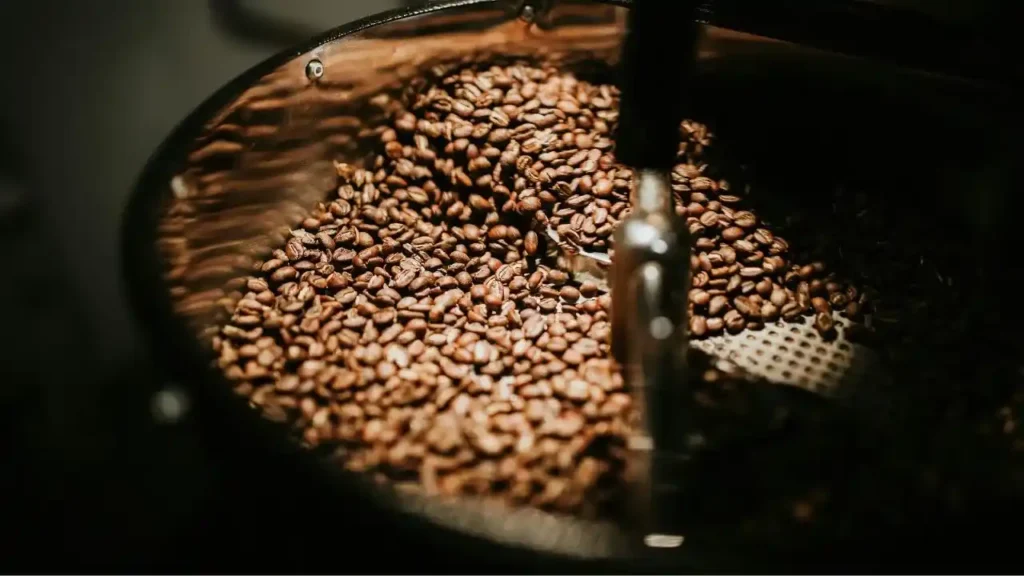Roasting coffee beans is both an art and a science, transforming raw, green coffee beans into the aromatic, flavorful beans that coffee enthusiasts cherish. The roasting process not only affects the beans’ color and aroma but also profoundly influences their taste. Understanding this transformation can enhance your appreciation of coffee and help you choose the perfect roast for your preferences. In this guide, we’ll explore the roasting process, the impact of different roast levels, and how you can apply this knowledge to enjoy your coffee to the fullest.
The Roasting Process
From Green to Brown: The Roasting Stages
- Drying Stage: The initial phase of roasting involves removing the moisture from the green coffee beans. During this stage, the beans turn from green to yellow as they lose their initial moisture. The drying process is crucial for ensuring that the beans roast evenly and develop the desired flavors.
- Browning Stage: As the beans continue to roast, they undergo the Maillard reaction, a chemical process that creates complex flavors and aromas. The beans turn brown and start to release their oils. This stage is where the development of the coffee’s flavor profile begins to take shape.
- First Crack: This is a critical point in the roasting process. The first crack occurs when the beans expand and crack open due to the build-up of internal pressure. This stage marks the transition from a light roast to a medium roast and is characterized by a distinct popping sound.
- Development Stage: After the first crack, the beans enter the development stage, where they continue to roast and develop their flavors. This is where roast levels are determined, from light to medium to dark. The development time influences the final taste, body, and acidity of the coffee.
- Second Crack: For darker roasts, the beans undergo a second crack, a more subdued sound compared to the first crack. This stage indicates the beans are approaching a dark roast level and can result in deeper, more intense flavors.
Roasting Equipment
Different types of roasting equipment can affect the final outcome of the roast:
- Drum Roasters: Use a rotating drum to ensure even roasting. This method is popular for its consistency and ability to produce a wide range of roast levels.
- Air Roasters: Use hot air to roast the beans, providing a quick and even roast. Air roasters are known for their ability to highlight the subtle flavors of the coffee.
- Home Roasters: Designed for small batches, these roasters allow coffee enthusiasts to experiment with different roast levels and profiles.
Roast Levels
Light Roast
Light roast beans are light brown and have no oil on the surface. They preserve the original flavors of the coffee, including bright acidity and fruity or floral notes. Light roasts are ideal for highlighting the unique characteristics of the coffee’s origin.
Medium Roast
Medium roast beans are medium brown and may have slight oil on the surface. They offer a balanced flavor with moderate acidity and body. This roast level often features caramel, chocolate, and nutty notes, providing a well-rounded cup of coffee.
Dark Roast
Dark roast beans are deep brown to nearly black, with an oily surface. These beans have a bold, robust flavor with less acidity, featuring smoky, bittersweet, or even spicy notes. Dark roasts are often preferred for their rich, intense flavor.
Impact of Roasting on Flavor
Acidity
Roasting affects the acidity of coffee, which contributes to its brightness and complexity. Light roasts typically have higher acidity, while darker roasts tend to have lower acidity and more muted flavors.
Body
The body of coffee refers to its weight or mouthfeel. Dark roasts generally have a fuller body, creating a more substantial, syrupy texture, while lighter roasts offer a lighter, more delicate body.
Flavor Complexity
Roasting develops the complex flavors of coffee, from fruity and floral in lighter roasts to smoky and spicy in darker roasts. Each roast level brings out different aspects of the coffee’s flavor profile, making the choice of roast an important factor in your coffee experience.
Choosing the Right Roast
Personal Preferences
Your ideal roast level depends on your taste preferences. If you enjoy bright, acidic flavors, a light roast may be ideal. If you prefer a balanced, medium-bodied coffee, a medium roast might suit you best. For those who enjoy bold, rich flavors, a dark roast is likely the preferred choice.
Experimentation
Don’t be afraid to experiment with different roast levels and origins to find your perfect cup. Tasting different roasts can help you understand how roasting influences flavor and allow you to discover what you enjoy most.
Conclusion
The art of roasting coffee beans is a delicate balance of science and creativity, transforming green beans into the rich, flavorful coffee we enjoy. By understanding the roasting process and the impact of different roast levels, you can make more informed choices and elevate your coffee experience. Whether you prefer a light, bright cup or a dark, robust brew, appreciating the nuances of roasting will enhance your enjoyment of this beloved beverage.
At BrewClan Coffee, we offer a range of specialty beans roasted to perfection, ensuring that you get the freshest and most flavorful coffee. Explore our selection to find the roast that matches your taste preferences, and experience the art of roasting in every cup.



